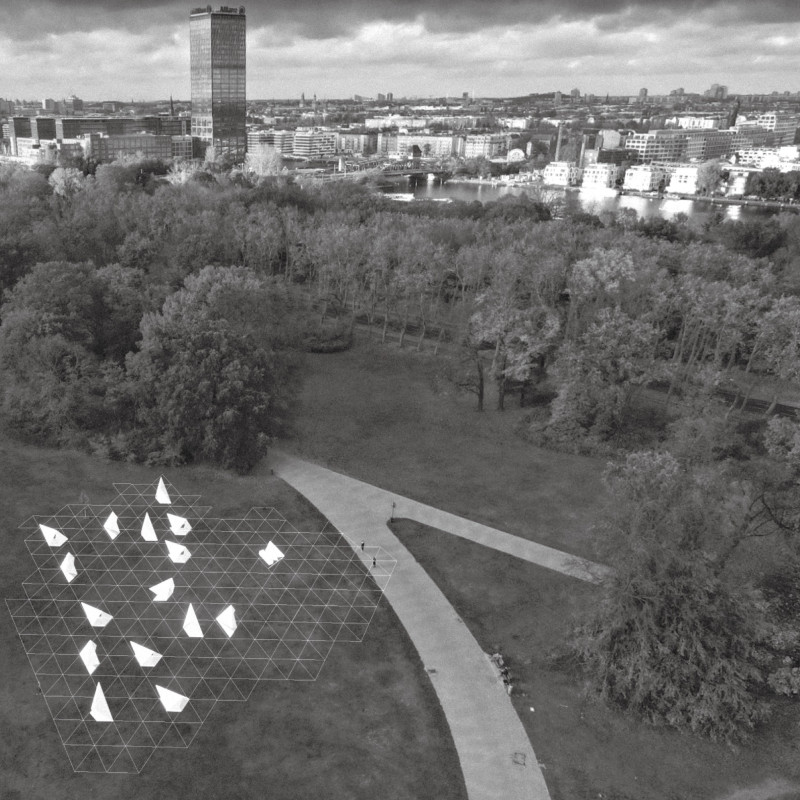5 key facts about this project
The design introduces a triangular structure that captures the essence of techno music and rave culture. Located in an urban area suited for nightlife, it creates a space that supports both individual experiences and group interactions. The main idea is to use the “poly pocket” concept, where each poly serves as a private booth. This allows users to engage deeply with the music while also promoting contact with others around them.
Structure and Form
The triangular shape of the design is important for encouraging movement and direction. The compact geometry enhances the lively atmosphere typical of rave culture. Each poly booth stands on its own but is also connected to others. This connection encourages interactions among participants, allowing for communication through music and the physical responses of attendees, rather than through direct exchanges with the DJ or fellow ravers.
Spatial Arrangement and User Interaction
The layout is organized to support social distancing, which is an important consideration today. The tetrahedron pattern on the ground clearly shows different areas, helping to maintain an organized flow. This thoughtful arrangement strikes a balance between individual privacy and the shared experience of the rave culture, permitting participants to focus on their personal experience while also engaging with the atmosphere of the event.
Materiality and Sustainability
Regarding materials, aluminum is used for its lightweight and recyclable features. The outer layer of the structure consists of a recycled water-repellent fabric, providing necessary protection from rain and other weather elements. This focus on sustainable materials aligns with current expectations in design, where ecological considerations play a significant role in shaping choices.
Adaptive Design Features
The structure's design supports flexibility based on its intended use. Each poly booth can be modified, with sides that can be opened or closed, allowing for different setups depending on the event. This adaptability makes it possible to change the layout according to visitor needs. The dynamic interactions encouraged by this versatility reflect the spirit of techno music culture.
The design’s interactivity and flexibility not only meet practical demands but also contribute to the overall experience, emphasizing the connection between architecture and cultural activities. The thoughtful integration of adaptable features ensures the space remains responsive to visitors and their varying needs during events.



















































